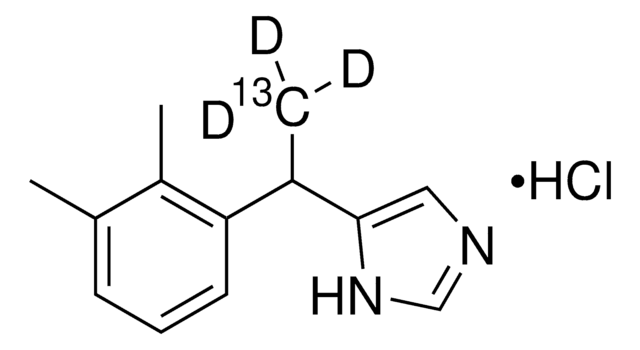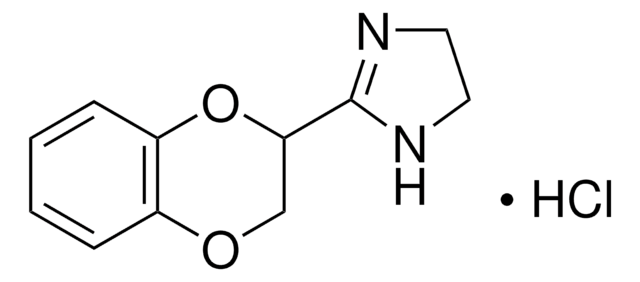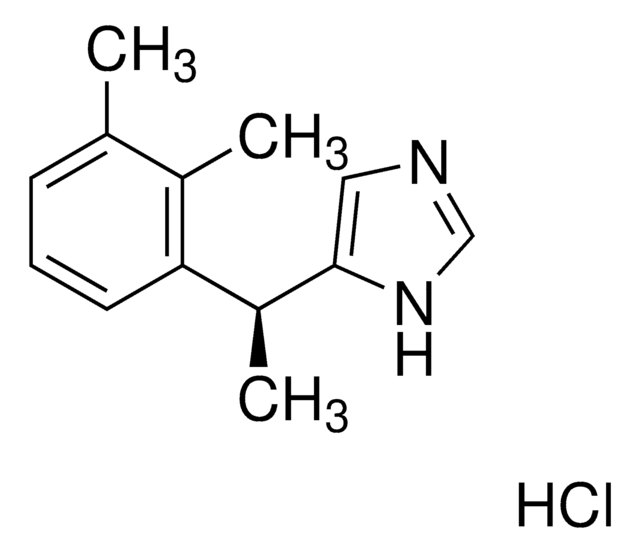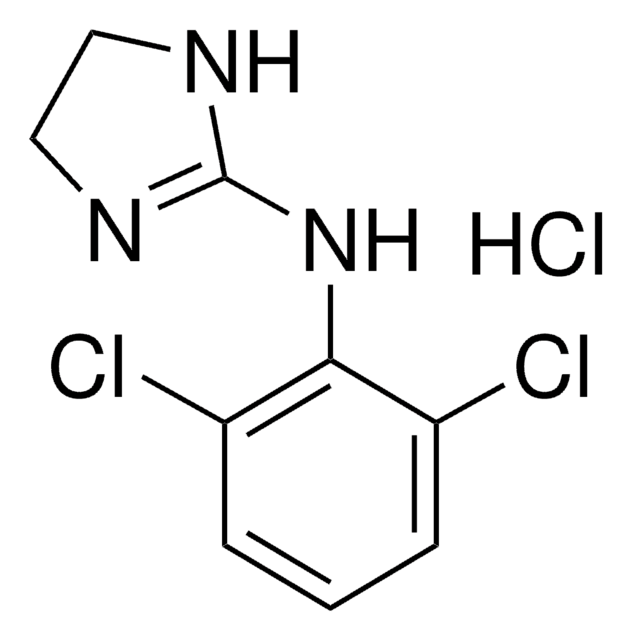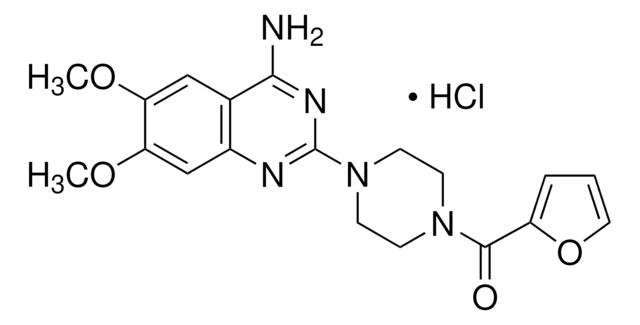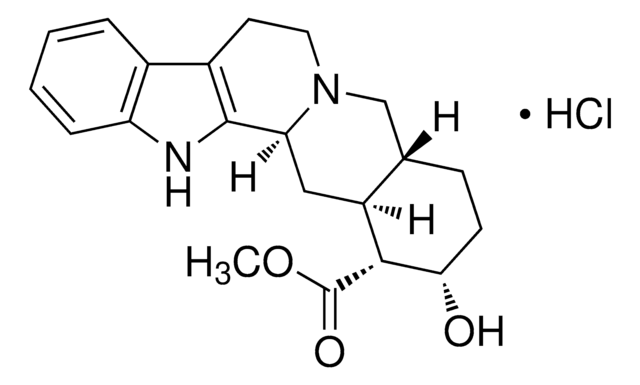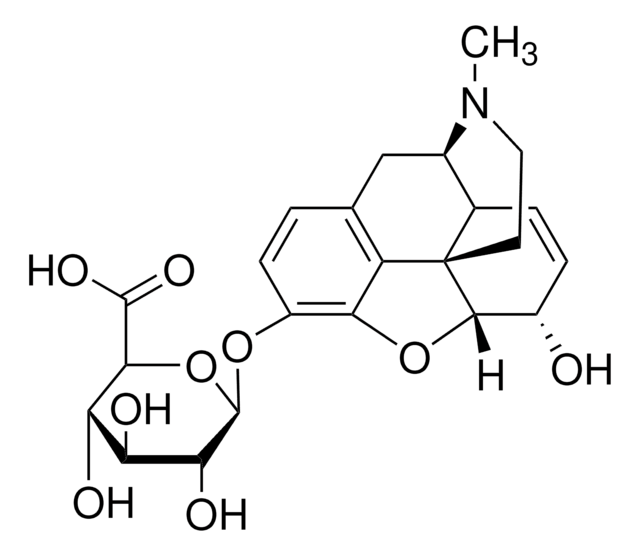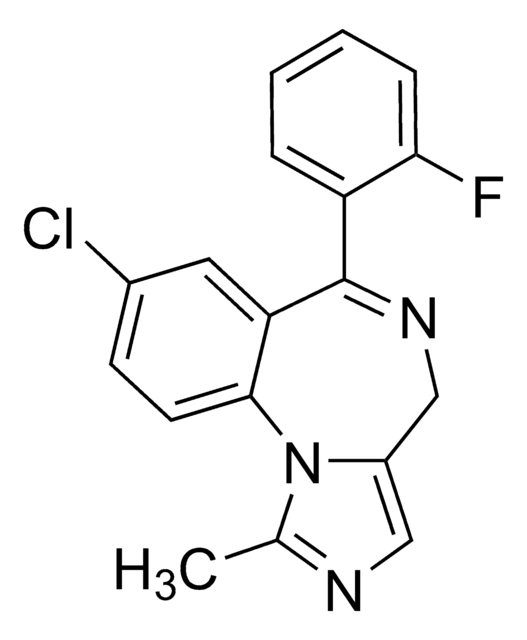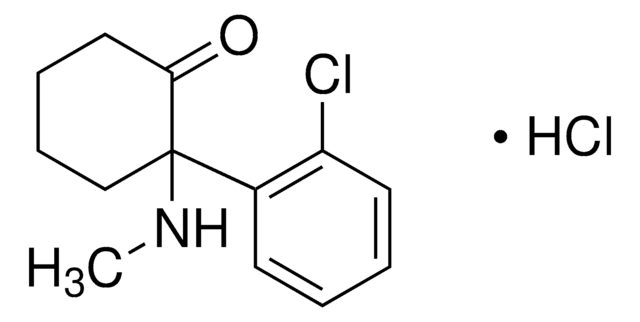SML0956
Dexmedetomidine hydrochloride
≥98% (HPLC)
Synonim(y):
(+)-Medetomidine hydrochloride, (S)-Medetomidine hydrochloride, 4-[(S)-α,2,3-Trimethylbenzyl]imidazole monohydrochloride, 5-[(1S)-1-(2,3-Dimethylphenyl)ethyl]-1H-imidazole hydrochloride
About This Item
Polecane produkty
Poziom jakości
Próba
≥98% (HPLC)
Formularz
powder
aktywność optyczna
[α]/D +48 to +58°, c = 1 in H2O
warunki przechowywania
desiccated
kolor
white to beige
rozpuszczalność
H2O: 20 mg/mL, clear
temp. przechowywania
2-8°C
InChI
1S/C13H16N2.ClH/c1-9-5-4-6-12(10(9)2)11(3)13-7-14-8-15-13;/h4-8,11H,1-3H3,(H,14,15);1H/t11-;/m0./s1
Klucz InChI
VPNGEIHDPSLNMU-MERQFXBCSA-N
Szukasz podobnych produktów? Odwiedź Przewodnik dotyczący porównywania produktów
Zastosowanie
Działania biochem./fizjol.
Cechy i korzyści
Hasło ostrzegawcze
Warning
Zwroty wskazujące rodzaj zagrożenia
Zwroty wskazujące środki ostrożności
Klasyfikacja zagrożeń
Acute Tox. 4 Oral - Aquatic Chronic 2 - STOT SE 3
Organy docelowe
Central nervous system
Kod klasy składowania
11 - Combustible Solids
Klasa zagrożenia wodnego (WGK)
WGK 3
Temperatura zapłonu (°F)
Not applicable
Temperatura zapłonu (°C)
Not applicable
Wybierz jedną z najnowszych wersji:
Certyfikaty analizy (CoA)
Nie widzisz odpowiedniej wersji?
Jeśli potrzebujesz konkretnej wersji, możesz wyszukać konkretny certyfikat według numeru partii lub serii.
Masz już ten produkt?
Dokumenty związane z niedawno zakupionymi produktami zostały zamieszczone w Bibliotece dokumentów.
Klienci oglądali również te produkty
Nasz zespół naukowców ma doświadczenie we wszystkich obszarach badań, w tym w naukach przyrodniczych, materiałoznawstwie, syntezie chemicznej, chromatografii, analityce i wielu innych dziedzinach.
Skontaktuj się z zespołem ds. pomocy technicznej


